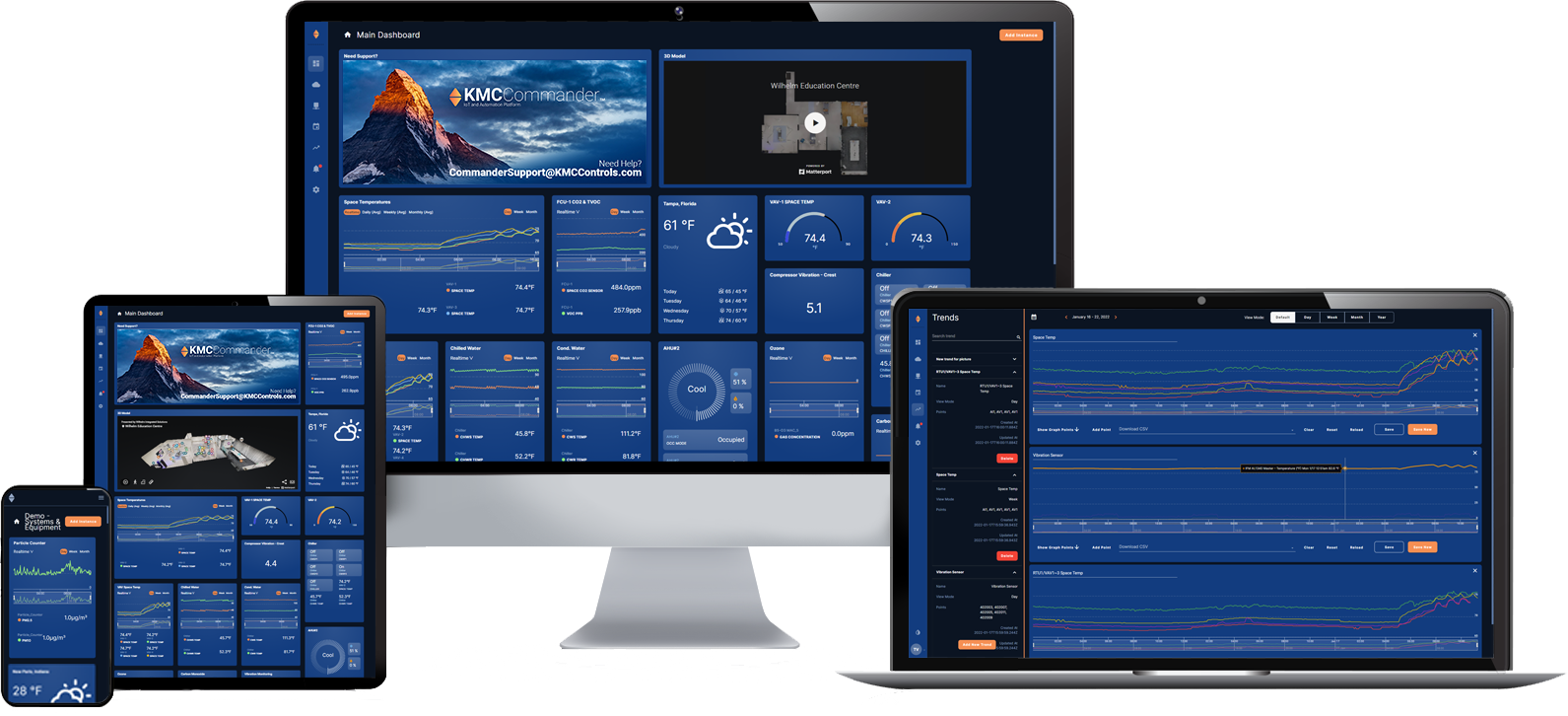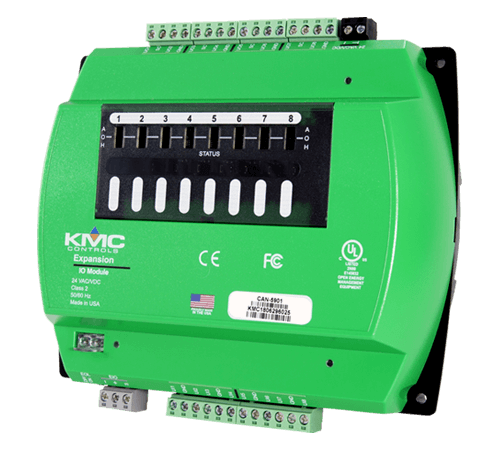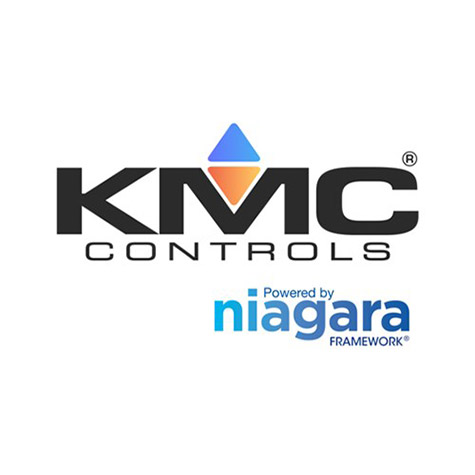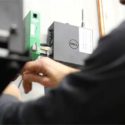Indoor Environmental Quality (IEQ)
Indoor Environmental Quality, also called IEQ or just EQ, is one of eight credit categories in the LEED (Leadership in Energy and Environmental Design) green building rating system. IEQ is a measure of multiple aspects of an indoor environment on human health and performance, including indoor air quality (IAQ) and thermal, visual and acoustic comfort. All of these factors can be managed through smart building technology.
For example, a wall-mounted unit like the KMC Conquest STE-9000 series NetSensors includes up to four sensors for temperature, humidity, motion, and CO2. A robust room sensor like this one minimizes labor, wiring, and wall space while still feeding robust data into a BMS, BAS or IoT platform and allows for expanded, energy-efficient control of humidity, temperature setback, lighting, and ventilation.
Predictive Maintenance
As the name implies, predictive maintenance techniques assess the condition of equipment to determine when maintenance will be needed. Unlike preventive maintenance, in which service is performed at regular, set intervals regardless of equipment performance, predictive maintenance can save costs, because service is only performed when it’s needed. Predictive maintenance generally includes three phases: surveillance, diagnosis, and remedy.
In the surveillance phase, equipment conditions are monitored to identify potential problems. In the diagnosis phase the root cause of the issue is identified, and in the remedy phase corrective action is taken to correct the problem.
The surveillance and diagnosis phases in particular lean heavily on data collection and assessment. A smart building’s automation hardware and sensors can be used to gather the necessary data, which can be delivered to smart building software. The software can then utilize trends to figure out and “predict” when maintenance may be needed, and trigger an alarm to notify a facility manager.
Most building automation software does not do this automatically. Instead, an experienced technician or facility manager with knowledge of each specific system would need to set up the software to identify trends and set up alarms as needed. For example, a facility manager could recognize that a duct fan is using more amps than normal (identified with a meter) to reach a particular air flow (identified with a duct pressure sensor). If the facility manager also knows that a filter is directly in front of that fan, her or she can reasonably assume that as the amps increase, the filter is getting dirtier. Thus, trend averages can “predict” when the filter needs to be replaced.
The KMC Commander IoT Platform or KMC TotalControl® software are ideal tools to integrate sensors, view trends and create alarms for predictive maintenance. In addition to our own sensors such as the TPE and STE series,KMC Controls also supplies sensors for this type of application through partnerships with ACI and Veris Industries, as well as Niagara software solutions from Tridium.

Smart Energy Metering
A smart energy meter records and communicates electric energy consumption based on real-time readings from sensors attached to energy-consuming equipment. Often, smart energy metering is set up to send this data directly to utility companies for tracking and billing purposes. But capturing, analyzing, and acting on energy consumption data in a building management system can help facility managers improve energy efficiency in heating, cooling, and light use, while also decreasing HVAC run times through improved zone controls.
Smart energy metering also empowers facility managers to monitor power and utility usage so there are no rude surprises when the bills arrive. Some meters even monitor alternative energy solutions on the property such as wind, solar, and geothermal. Overall, smart energy meters can be a useful tool for improving efficiency over time.
 Cart
Cart

































 The Building Geniuses® at KMC Controls are all about delivering smart, efficient systems that maximize your budget over the long haul. When you’re ready talk about crafting the best system for your needs,
The Building Geniuses® at KMC Controls are all about delivering smart, efficient systems that maximize your budget over the long haul. When you’re ready talk about crafting the best system for your needs,